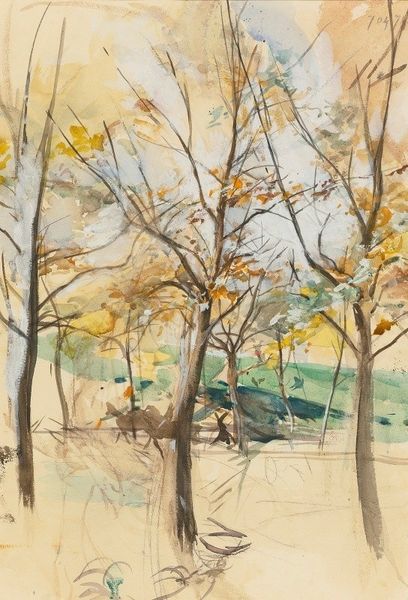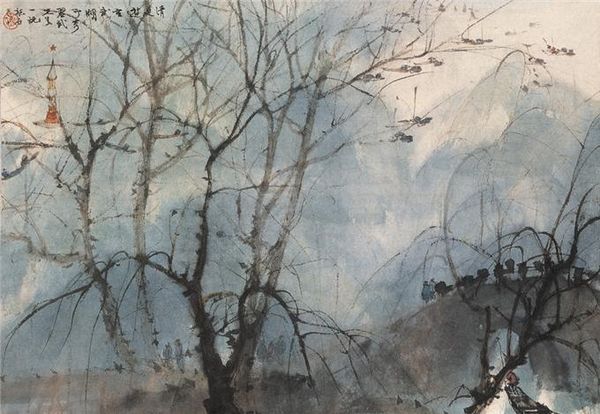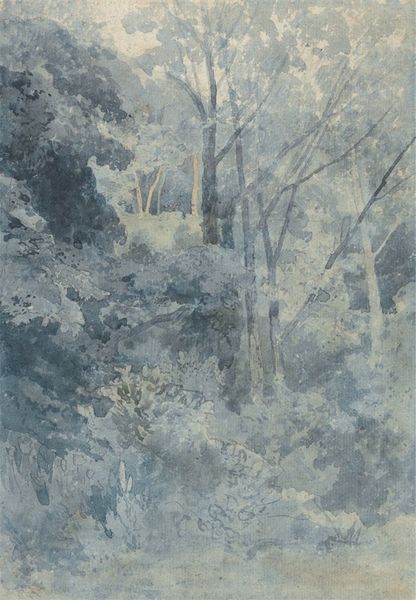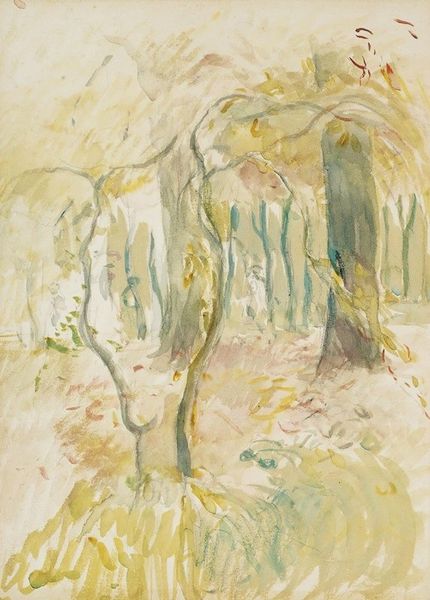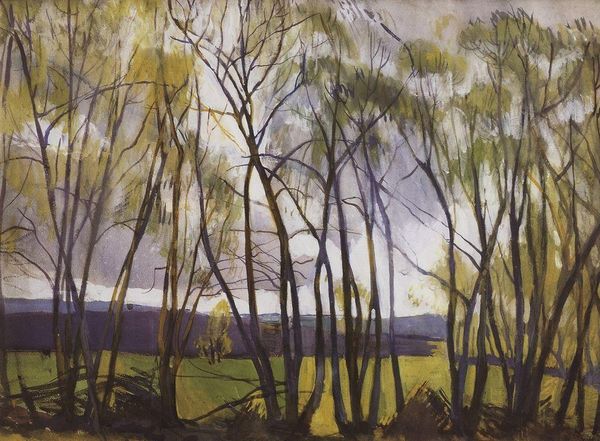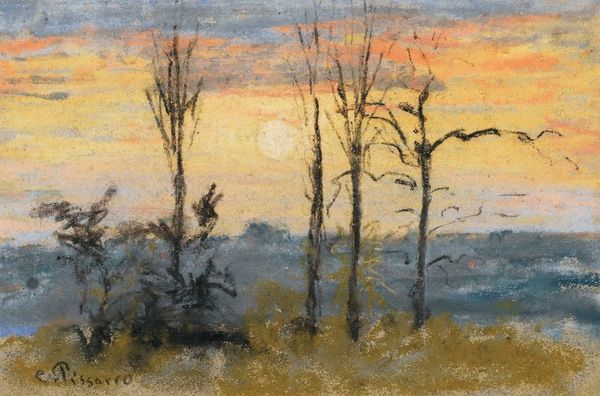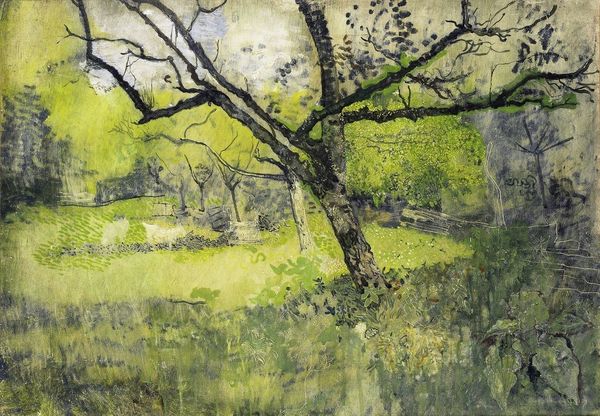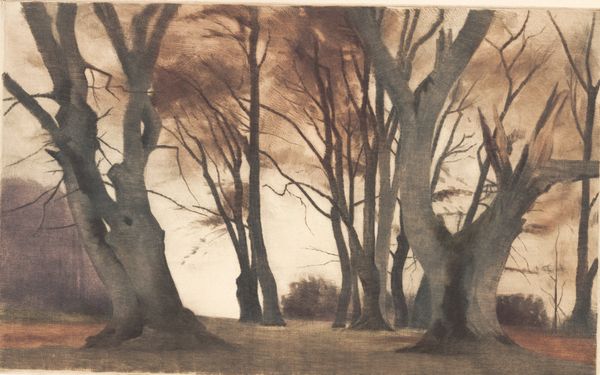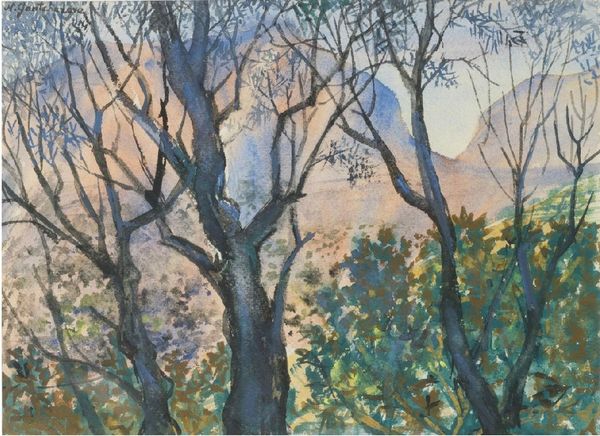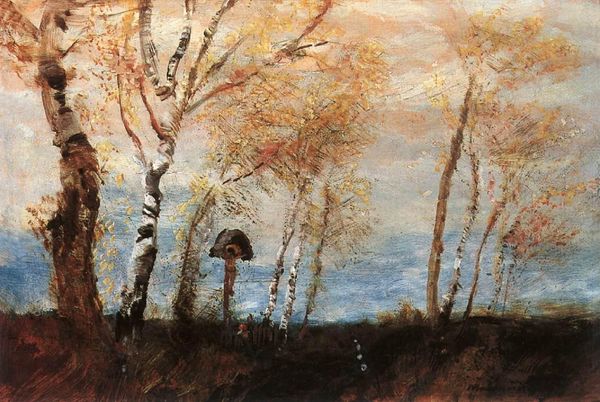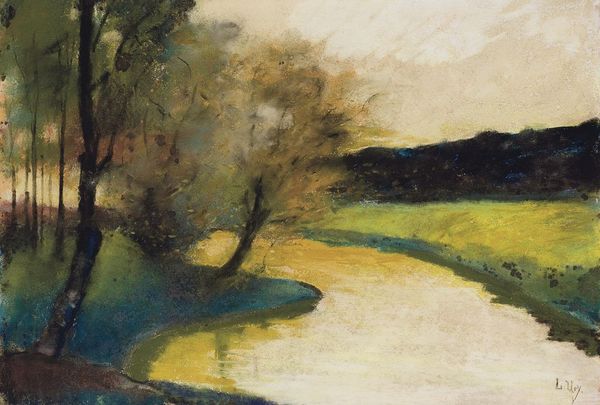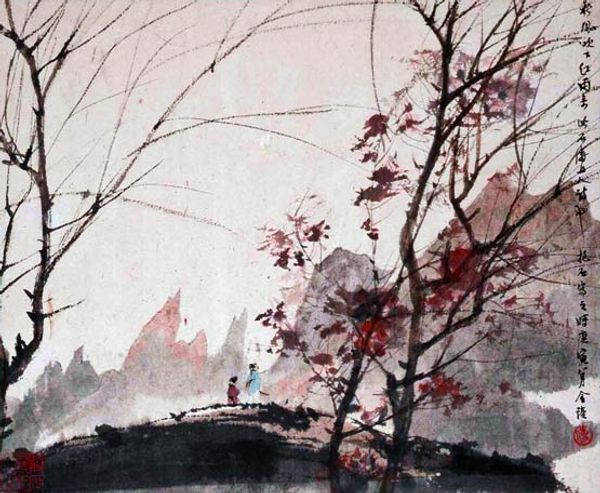
Copyright: Public domain
Editor: This is Isaac Levitan’s “Mist. Autumn.,” painted in 1899, in what looks like watercolor. It's giving me a melancholic, almost ethereal feeling. What do you see in this piece? Curator: What strikes me is how Levitan uses the landscape to explore themes of isolation and societal change in late 19th-century Russia. Do you notice how the muted tones and the pervasive mist obscure the details of the scene? Editor: Yes, the lack of distinct features adds to that feeling of loneliness. The brown shades add to the dreary vibe of the image, with an overwhelming melancholic tone. Curator: Exactly. Consider this in the context of the social and political landscape of the time. Russia was undergoing rapid industrialization, displacing rural populations and disrupting traditional ways of life. The mist, then, could symbolize the uncertainty and disorientation of this transition, mirroring the anxieties of those feeling left behind. How might this resonate with contemporary anxieties about environmental degradation? Editor: Wow, I hadn't thought of it that way, but now I see it. The destruction of nature then could mirror environmental destruction now. Thanks, that perspective really sheds a new light on it! Curator: Art gives us a deeper understanding of our own lived reality. By examining social historical issues, it encourages critical awareness, helps recognize patterns of power, and inspires conversations. Editor: Absolutely. I'm definitely going to look at landscape art differently now, with more awareness of its historical and cultural implications.
Comments
No comments
Be the first to comment and join the conversation on the ultimate creative platform.
